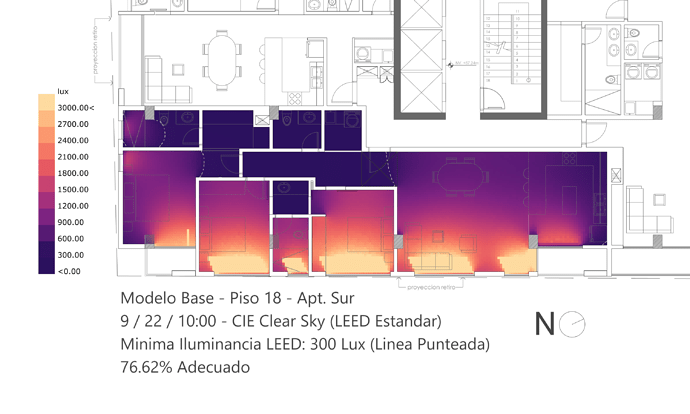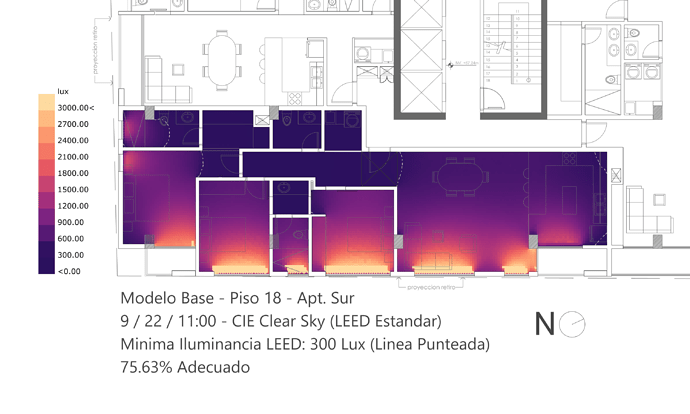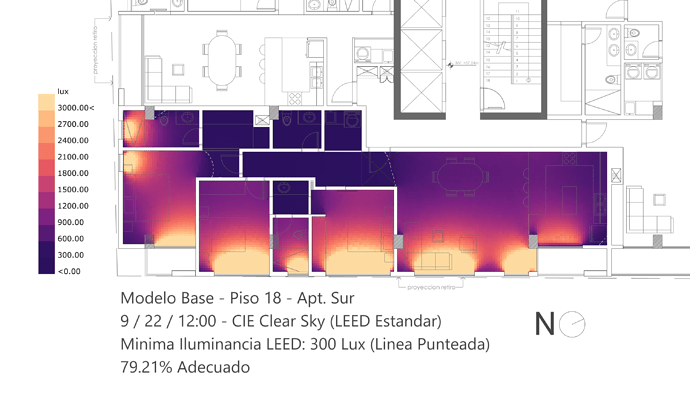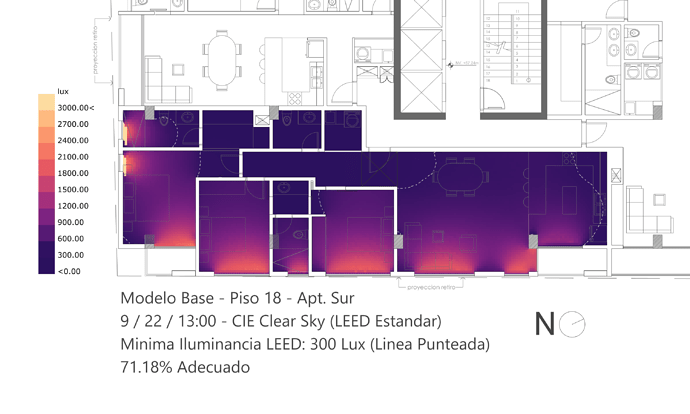Hi there! I am running hourly simulations for some apartment designs to see the evolution of daylight during the day. I am encountering this strange issue that illuminance values jump up only during the simulation at noon (12:00) (Attaching images). There is a logical pattern of light moving into or out of the space as the sun moves, but then it reaches noon and breaks the pattern. Simulation is at september 22nd (Equinox). That means that here the sun is almost perfectly vertical above.
There is no context geometry, the model is up in space about 50 meters as well. I am using Quito, Ecuador EPW from energyplus website. And also using high Radiance settings. Sky is CIE Clear Sky component.
Any ideas why this is happening?!
This also happens for the apartments at the other orientations.
Does not seem all that implausible to me. If your north arrow is correct, most of the windows in your space are facing east. Sun rises in the east and so you are getting a fair amount of morning direct low-angle radiation in the morning, as evidenced by first two figures.
At 14:00 only your south facing window is getting some direct radiation from the west, which also makes sense. That also explains why your east facing windows are not getting direct radiation at that time.
(PS: You might want to double-check on the sky type being used. If you are using epw files to derive direct-normal and diff-horizontal radiation values, there is a likelyhood that low values of radiations will cause the solar disc to be absent even during afternoons)
Thank you, I will check the radiation values of the sky and get back to this post with the results.
For the East facing space, I would have imagined that 11AM would be brighter than 12PM because of the direct sunlight entering the space. At 12, in theory there should be almost no direct rays entering the space. That is my worry. I’ll keep checking with more detail. Yes, the north arrow is correct.
Easily check with the sunpath where the sun is located at noon. It can be possible that it leans east a bit.
-A.
Are you using a climate-based sky or a CIE sky? I assume it’s the latter based on the legend of your simulation. CIE sky is NOT generated based on the values from your weather file. It only uses location data from your weather file input.
Also you can use watch the sky component in combination with sunpath as suggested by @AbrahamYezioro to see both the sky and the position of the sun for your study.




